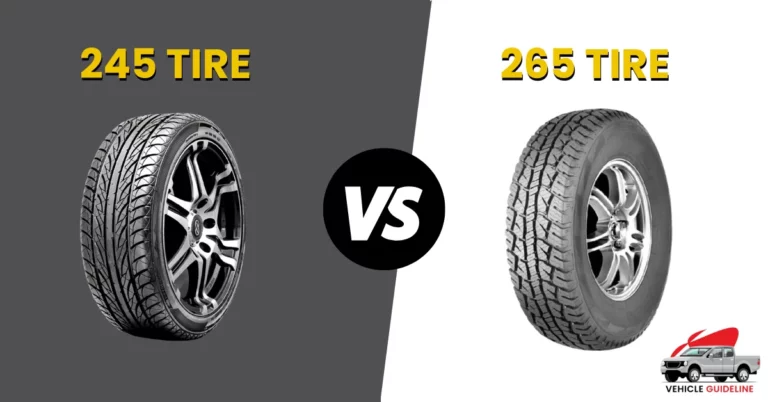8 Common GM 6.0 Engine Problems, Symptoms and Solutions
The GM 6.0 engine is a powerhouse known for its durability and performance, but like any mechanical system, it can experience issues over time. If you own a vehicle with this engine, it’s important to be aware of the common problems that may arise and their corresponding symptoms. In this article, we will explore eight common GM 6.0 engine problems. We will also provide solutions to help you address these issues and keep your engine running smoothly for years to come. So let’s get started.
GM 6.0 Engine Problems

Poor Gas Mileage
One of the problems that GM 6.0 engine owners often encounter is poor gas mileage. This issue can be attributed to several factors, including a clogged air filter, malfunctioning oxygen sensors, or even dirty fuel injectors. Fortunately, there are some solutions to tackle this problem and improve your engine’s efficiency.
SOLUTION
- Regularly check and replace the air filter, as dirt and debris can accumulate over time and restrict airflow to the engine. A clogged air filter forces the engine to work harder and consume more fuel.
- Malfunctioning oxygen sensors can negatively impact your gas mileage as they provide crucial information about the oxygen levels in the exhaust system. Replacing faulty oxygen sensors will enhance your vehicle’s performance and contribute to better fuel economy.
- Dirty fuel injectors can disrupt proper fuel spray patterns and lead to inefficient combustion. Cleaning or replacing them can significantly increase your gas mileage while enhancing overall engine performance.
Power Loss
The Chevy 6.0 engine is known for its varying horsepower output, ranging from 300 to 400, depending on the generation and model. Regarding real-life conditions, the power output may not live up to expectations. This engine is primarily installed in Sierra and Silverado models, where it is expected to propel a massive 5,000-pound truck along with its passengers and cargo.
Despite offering some power through its Vortec 6000 design, it is essential to note that this engine has been primarily engineered as a workhorse. As a result, power might be lost compared to more performance-oriented engines. Nonetheless, the Chevy 6.0 engine remains a reliable choice for those seeking robust towing capabilities or heavy-duty hauling.
SOLUTION
Finding the right solutions can be quite challenging when it comes to power loss in GM 6.0 engines. Understanding the underlying causes can help point toward effective remedies.
- One potential solution lies in addressing faulty ignition components. A malfunctioning spark plug or ignition coil can significantly impact engine performance and result in power loss. It is advisable to regularly inspect these components and replace them as necessary to maintain optimum engine function.
- A boost leak could be the root cause of power loss for trucks or vehicles with a turbocharger. Even minor leaks within the boost pressure system can cause a substantial reduction in performance levels. Checking for leaks around hoses, fittings, intercoolers, and connectors is essential for maintaining proper turbocharger functionality.
- Check the fuel injectors because, over time, these injectors can become clogged or worn out, resulting in improper fuel delivery and decreased power output. Cleaning or replacing the fuel injectors as necessary can restore fuel flow and regain lost power.
Throttle Position Sensor

The throttle position sensor (TPS) is an essential component of the 6.0 Chevy engine. It often becomes faulty and needs replacement over time. While the mass airflow (MAF) sensor measures air volume entering the engine, the TPS performs a similar function at the throttle body.
A malfunctioning TPS can lead to various issues, including decreased power and increased fuel consumption. This occurs when the faulty sensor causes the engine to run rich, meaning it receives too much fuel for the air being drawn in. Consequently, this imbalance negatively affects throttle response and acceleration.
SOLUTION
Replacing a faulty TPS is crucial to restore proper engine performance. A new and functional TPS ensures optimal fuel-to-air mixture ratios by providing accurate data on throttle position, improving power output and fuel efficiency. Regular maintenance and timely replacement of this vital sensor can help keep your 6.0 Chevy engine running smoothly and efficiently for a more extended period.
Exhaust Manifold Leak
A persistent issue has plagued the third-generation Vortec 6.0 engine: the exhaust manifold leak. This problem arises due to either improper torquing during assembly or the use of low-quality bolts. Consequently, the bolts holding the exhaust manifold in place may gradually loosen or even snap.
Several unmistakable symptoms signal a leaking exhaust manifold. One of the most noticeable signs is the pungent smell of exhaust fumes permeating the cabin, which can be unpleasant and potentially dangerous for occupants. An afflicted vehicle will emit a louder engine noise than usual, indicating a problem with the exhaust system.
Drivers might observe exhaust smoke from the engine and surrounding area. This can range from intermittent wisps to more pronounced clouds under significant leakage conditions. It’s crucial to address this issue promptly, as exhaust leaks affect performance and fuel efficiency and pose health risks if toxic fumes enter the cabin.
SOLUTION
- Inspecting the exhaust manifold gaskets for any wear or damage is essential. These gaskets are crucial in sealing the connection between the manifold and cylinder heads. If worn out or damaged, they should be replaced with new ones to ensure a proper seal.
- Use high-quality aftermarket exhaust manifold bolts and studs. The stock bolts can sometimes become loose or break due to heat cycles and vibrations, leading to leaks. Upgrading to stronger and more durable bolts can help prevent future leaks and provide a secure connection between the manifold and cylinder heads.
- A high-temperature exhaust sealer can be an effective temporary solution for minor leaks. This sealer creates a durable barrier that seals small gaps in the exhaust system until more permanent repairs can be made.
Active Fuel Management System
Chevrolet attempted to enhance the Vortec 6000 engine by incorporating cutting-edge technology to improve its performance. However, this endeavor has resulted in a significant drawback for the IV generation models. The active fuel management system, designed to boost fuel efficiency by deactivating half of the cylinders, has unfortunately led to a prevalent issue of severe oil consumption.
This problem is particularly concerning because it impacts the engine’s functionality and damages gas mileage. Despite Chevrolet’s intention to optimize the Vortec 6000 engine with high-tech components, their efforts have inadvertently raised a major concern for IV generation model owners.
The active fuel management system implemented in these vehicles can lead to excessive oil consumption, causing drivers inconvenience and expense as they frequently need to add oil to maintain the necessary levels. This unfortunate consequence overshadows any minimal gains achieved through improved fuel efficiency when operating on fewer cylinders.
The severe oil consumption reported by numerous owners raises questions about the effectiveness and reliability of this implementation within Chevrolet’s IV generation models. While attempting to address one issue (gas mileage), another detrimental factor (oil consumption) has been introduced.
SOLUTION
Several solutions are available for those who have experienced problems with their AFM system.
- Disabling the AFM altogether through custom tuning software or an aftermarket programmer. This eliminates the potential for any future issues related to cylinder deactivation and allows all cylinders to run continuously.
- Install an AFM delete kit, including hardware components, to bypass or disable the AFM system. These kits provide a permanent fix and can help prevent any potential damage caused by faulty cycling between deactivated and active cylinders.
Water Pump

The 6.0 Vortec water pump in Chevy vehicles has been mistakenly noted as having a problem. This assumption arises mainly because many owners neglect to change the water pump and serpentine belt at recommended intervals. However, it is important to note that aftermarket water pumps are readily available at affordable prices.
Replacing the water pump can be quickly done at home with the proper tools. When replacing the water pump, one must also bleed the coolant and replace it for optimum performance. Prioritizing regular maintenance and following manufacturer recommendations is essential to ensure a properly functioning water pump in your Chevy vehicle.
SOLUTION
Check for coolant level and quality for signs of water pump failure. Contaminated coolant should be replaced. If the water pump fails or mileage exceeds 150,000, replacement is necessary. The cost for a 6.0-litre water pump replacement is around $330.
Overheating

One common problem with the GM 6.0 engine is overheating, which can be caused by various factors, such as a malfunctioning thermostat, a clogged radiator, or worn-out coolant hoses. Symptoms may include a rising temperature gauge, steam coming from the engine compartment, and coolant leaks.
SOLUTION
- Ensure proper coolant levels and regularly check for leaks in the cooling system. Using a high-quality coolant with the correct mixture of antifreeze and water can help maintain optimal engine temperatures.
- Checking and maintaining proper coolant levels is essential to avoid overheating in GM 6.0 engines. Regularly inspect the coolant reservoir and top it up with a 50/50 mixture of antifreeze and distilled water if needed.
- Keeping the radiator clean is another crucial step in preventing overheating issues. Debris, such as dirt or bugs, can accumulate on the radiator fins, obstructing airflow. Use a soft brush or compressed air to clean off any buildup gently.
- Upgrading the radiator fan can significantly improve cooling performance for GM 6.0 engines. Consider replacing the stock mechanical fan with an electric one for better efficiency and control over cooling.
- Installing a high-flow thermostat can also help regulate engine temperature more effectively without compromising performance. This modification allows coolant to flow more, keeping the engine cool even under heavy loads or hot weather conditions.
- Inspecting and servicing other components contributing to engine cooling, such as belts, hoses, and water pumps, is equally important in avoiding overheating problems in GM 6.0 engines.
Misfires

Misfires are another challenge for a smooth-running GM 6.0 engine, which can lead to loss of power or even a complete breakdown on the road. The most probable cause is damaged spark plugs or ignition coils that fail to ignite fuel properly in the cylinders. To minimize this risk, replace these components regularly according to manufacturer recommendations and ensure proper installation for optimal performance.
SOLUTION
It is always important to properly diagnose the root cause of the misfires. This can be done by thoroughly inspecting the ignition system components, such as spark plugs, ignition coils, and wires. If any of these parts are worn out or damaged, they should be replaced immediately.
- Clean or replace the fuel injectors. Over time, these components can become clogged with debris or deposits, leading to improper fuel distribution and subsequent misfires. By cleaning or replacing them, you can ensure that your engine receives adequate fuel for combustion.
- Check for spark plugs and ignition coils. Misfires in the GM 6.0 engine can often be attributed to faulty spark plugs or ignition coils. Inspect the spark plugs for signs of wear, such as cracked insulators or worn electrodes. If damaged, replace them with new ones that meet the manufacturer’s specifications. Test the ignition coils using an ohmmeter to ensure their resistance falls within acceptable limits.
- Verify fuel delivery system. A malfunctioning fuel delivery system can result in misfires in the GM 6.0 engine. Begin by checking the fuel pressure using a fuel pressure gauge to ensure it falls within the recommended range specified by General Motors. If it is too low or too high, diagnose and repair any issues with the fuel pump, fuel filter, or fuel injector system accordingly.
- Examine air intake system components. The air intake system provides clean and unrestricted airflow to the GM 6.0 engine for efficient combustion and power output. Inspect all air intake system components, including filters and ducts, for any signs of clogging or damage, which may restrict airflow and cause misfires. Clean or replace any dirty filters and repair any damaged ducts to restore proper airflow to support optimal engine performance.
Conclusion
The GM 6.0 engine is a robust and reliable option for many vehicles. Like any engine, it is not without its faults. Understanding and recognizing the common problems and symptoms that can arise with this engine is crucial for proper maintenance and timely repairs. From issues with the cooling system to electrical problems and oil consumption, these problems should not be taken lightly.
There are solutions available to address these issues. By staying informed about these common problems and taking proactive measures to manage them, owners of vehicles with GM 6.0 engines can ensure a smoother-running car for years to come.


![GM 5.3 vs 6.0 [12 Differences & Similarities]](https://vehicleguideline.com/wp-content/uploads/2023/08/gm-5.3-vs-6.0-768x377.webp)




